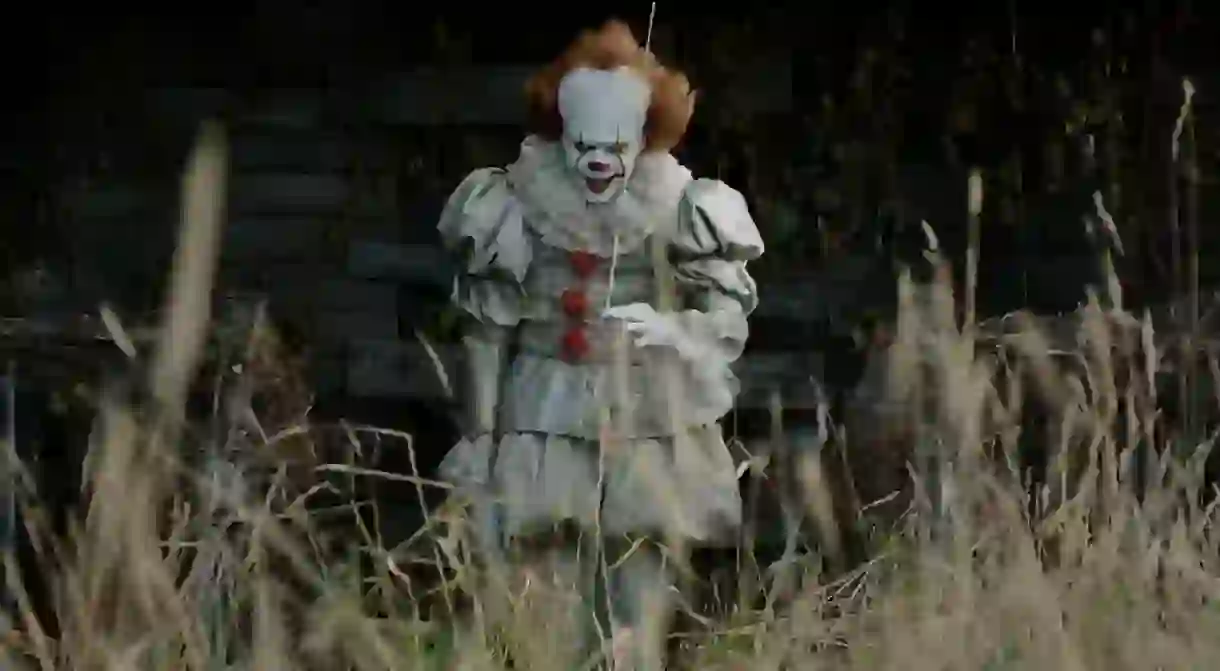'IT' Suffers From Too Many Stranger Things

There are some chilling moments in the cinematic remake of IT, but the film ultimately fails to deliver… and here’s why.
The trailer broke youtube records earlier this year, and the clips we’d seen prior to release certainly sent a chill down our collective spines. The cast are all excellent, and manage to showcase identifiable characters that will give anyone over a certain age a warm, nostalgic glow for the ’80s.
All the ingredients were in place for the remake of Stephen King’s IT to be the horror event of the year, but the misguided objective of competing with a smash hit TV show seriously harms the effectiveness of the film.
The core group of four central characters, already the maximum for such a film, is expanded to seven early on. By this point we lose count of who we’re supposed to be following, and that’s even before we get the inclusion of a vicious schoolyard bully who ends up as the de facto villain of the piece… poor Pennywise the killer clown barely gets a look in.
You might also like: Scariest Horror Films from Around the World, Ranked

This extended group dynamic works over the course of a series such as Netflix’s monster hit Stranger Things, a show that clearly influences this particular film. So overt are the references to the TV series, that the producers of IT even go as far as casting an actor best-known for playing Mike Wheeler on the small screen. Finn Wolfhard (awesome name, by the way), portrays the wise-cracking Richie Tozier in the film, yet all his one-liners are swamped by a need to explore the motivations of each of the other characters. The movie relies on you filling in the blanks by referencing what you know about the recognisable face from Netflix. It’s lazy, but something that is becoming all the more prevalent as the film industry desperately lags behind the rapidly growing streaming audience.
There are other problems with the film, including an uneven tone veering from comedy to horror without any pause for narrative development and, worse still, an overlong runtime. This can be squarely blamed on the overstuffed cast all needing some form of resolution, something that can be dripped out over the course of an episodic TV experience, but not so much within the confines of a 120-minute film.
Several central characters and a runtime of over two hours flies in the face of conventional genre wisdom. There is a reason why the most effective horror films rarely pass the 90 minute mark – of course, there are some notable exceptions such as The Exorcist (1973) – and certainly restrict the cast to a handful of core players.
The movie industry as a whole has suffered a terrible summer season (the worst since 2006) and that is taking into account the emergence of China as a global film market.

Stranger Things isn’t the only TV show to inadvertently wield an influence of the film industry. The gargantuan success of Game of Thrones has seen the likes of inferior movies with the general theme of swords, fantasy and dragons flood the market. Again, the cornerstone of the success of George R. R. Martin’s novels are the epic nature of the story unfolding over multiple strands, something that is virtually impossible in a summer blockbuster… or any movie for that matter. Of course, clever storytelling and inventive narratives can still be done in movie form, but it’s something that’s lacking in this adventure.
You might also like: Greatest Horror Films of the 21st Century
The obvious counter-argument in this case is that the film is based on a novel, and so the problems should be laid at the door of Stephen King and not the filmmakers. After all, there are just as many characters in the book and the setting is also dictated by the source material.
The problem is that it all just feeds back into the TV vs film debate. IT was famously a TV mini-series from 1990. The setting was 1960, with the hook being that the children we see from that time period are once again haunted by Pennywise 30 years later. The film version doesn’t even get to the second part of the story where the same characters we see are tormented as adults, and instead ends by teasing that we’ve only just seen “chapter one”.
The result for anyone who plans on seeing both versions is that the TV series (and novel, for that matter) are better in almost every way.
Rating: **
IT is out in cinemas now.













